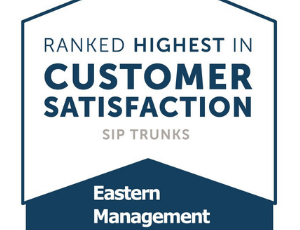There are many unique and situational reasons businesses might choose to leave their Communication Service Provider (CSP). Knowing what commonly leads to these separations can help a CSP ensure they are retaining their customers and delivering services that are most important to them.
Outlined below are common pitfalls that lead to customer and CSP separations, with tips on how CSPs can avoid them.
Customers Want a Variety of Communication Channels
One reason a customer might feel inclined to find a new CSP is because they want to expand their communication channels, services offered, and locations supported. While face-to-face communications remain important, COVID-19 is changing SMBs’ customer care expectations. A virtual, omnichannel approach is increasingly important to supporting businesses. For example, 57 percent of SMBs expect to use video for customer care. In response to this demand, CSPs are using online chat and video calls for sales and customer support since the start of the pandemic.
CSPs that can expand their offerings by including video and messaging capabilities can deliver the communications their customers are seeking. In partnership with software-centric carriers, CSPs can also deliver API-based capabilities like messaging or video conferencing. For CSPs, APIs are the gateway to providing reliable, flexible and scalable voice and messaging solutions for their customers. Utilizing APIs now will help to distinguish competitive advantage in the long run and will, in turn, provide customers with advanced capabilities and a lasting positive impact that can be directly tied to both revenue growth and end-customer satisfaction rates.
Services and Budget Concerns
Another common reason a customer might leave their provider is if they find they are not utilizing all of the services offered by their CSP. Alternatively, they may find that the tools the CSP provides do not match the tools they need (i.e. international phone numbers to support their growth). As their business evolves, they may assess new demands or outgrow services they once relied on, causing them to alter their suite of offerings.
Budget concern is another common reason a business might turn to a different provider. For example, companies may opt for a cloud communications reseller to lower costs or to add value with solutions that the CSP does not provide (e.g. if the business’ customer base is outgrowing the CSPs regional coverage networks). Further, market changes might influence a company’s communications budget, leading to a separation.
CSPs that are transparent about their pricing and services will attract customers looking for new communications tools that better meet customer needs.
SMBs and Enterprises Want to Grow with their Customers
As business is conducted on an increasingly global scale, establishing a local presence everywhere is imperative. How businesses engage with their customers, and the level of support they provide, can severely impact a brand’s long-term success. Since nearly 96 percent of the world’s consumers live outside of the U.S., businesses are under increased pressure to deliver customer experience (CX) strategies that support a global audience and they’re opting for CSPs that can support their growth, secure return on investment (ROI), and help them compete in the global market.
To attract and retain customers interested in international services, CSPs should offer international direct inward dialing (DID) numbers. DIDs are virtual numbers that allow carriers to route calls directly to an existing phone number, like an invisible extension. They provide businesses with a local presence in new or existing markets by utilizing local numbers, regardless of the originating call or number’s location. By leveraging these numbers, businesses strengthen their global communication strategies and offer more control and flexibility over ways to interact and engage with customers.
Customers Want Better Customer Service
Unfortunately, the telecom industry is known for poor customer service and it appears that many companies are plagued with this reputation. Enterprises are expecting more from their CSPs and want them to have a stronger reputation. A few ways CSPs can improve their customer service is by listening to their customers to better understand what level of support they need. Through evaluating the needs of customers, the CSPs can build a dedicated customer service team that can answer questions quickly and efficiently, as well as have the technical expertise to tackle the problems at hand. CSPs should also offer more than one channel where customers can contact support (e.g. phone call, website chat, email, etc.). Making it easier for the customer to seek resolution will help ensure long term success.
Flowroute’s Customer Service
In an Eastern Management Group (EMG) customer study conducted earlier this year, large enterprise customers were asked to evaluate SIP trunking providers. Flowroute received high marks for “shepherding the purchase experience and recommend-to-a-friend measurements.” Flowroute, along with three other carrier-grade vendors, received the highest Net Promoter Score (NPS) among the competing SIP providers evaluated in the study. In 2019, Eastern Management Group ranked Flowroute as top-rated SIP Trunking Provider in Customer Satisfaction. We are dedicated to providing quality service to our customers.






